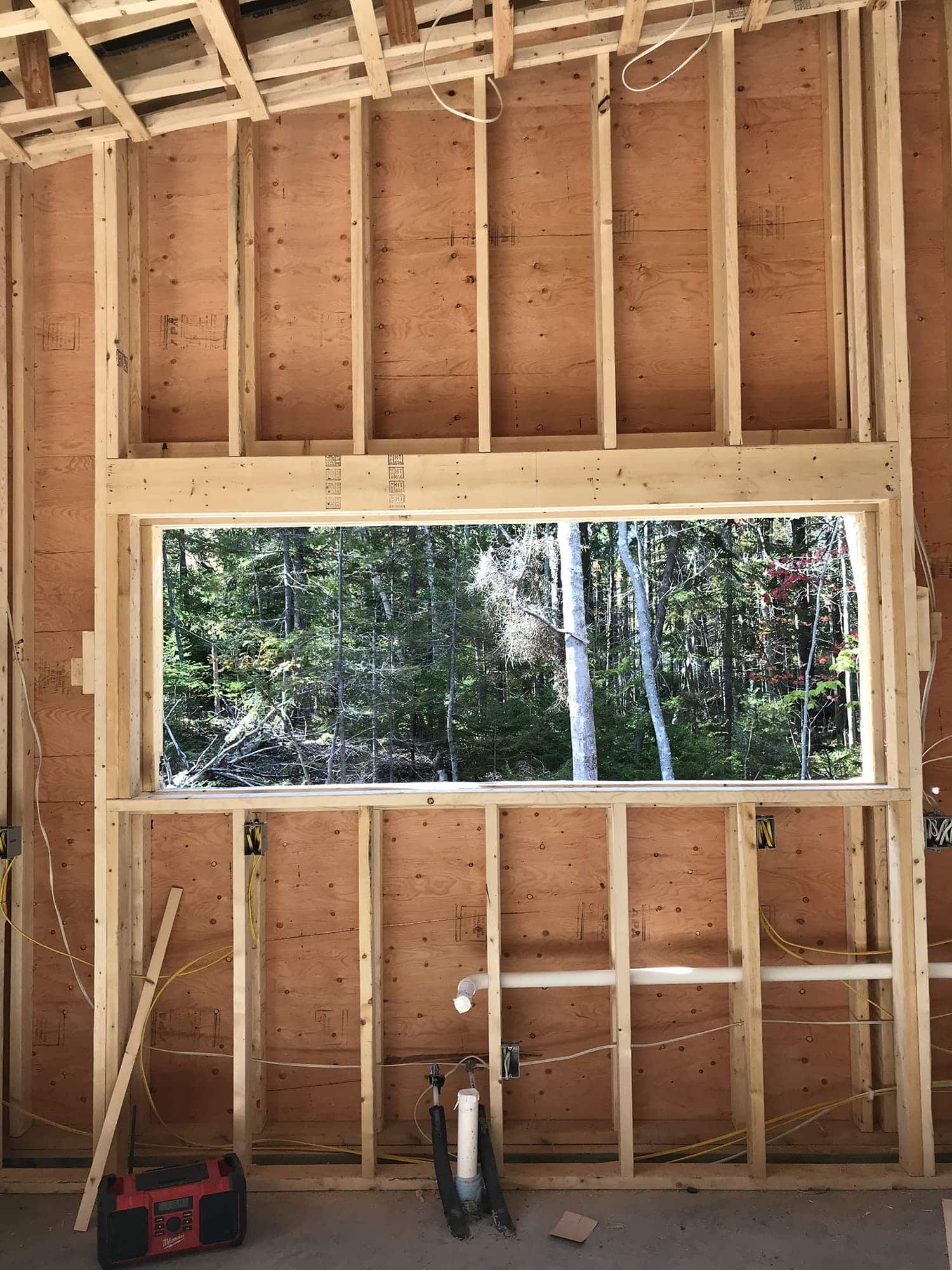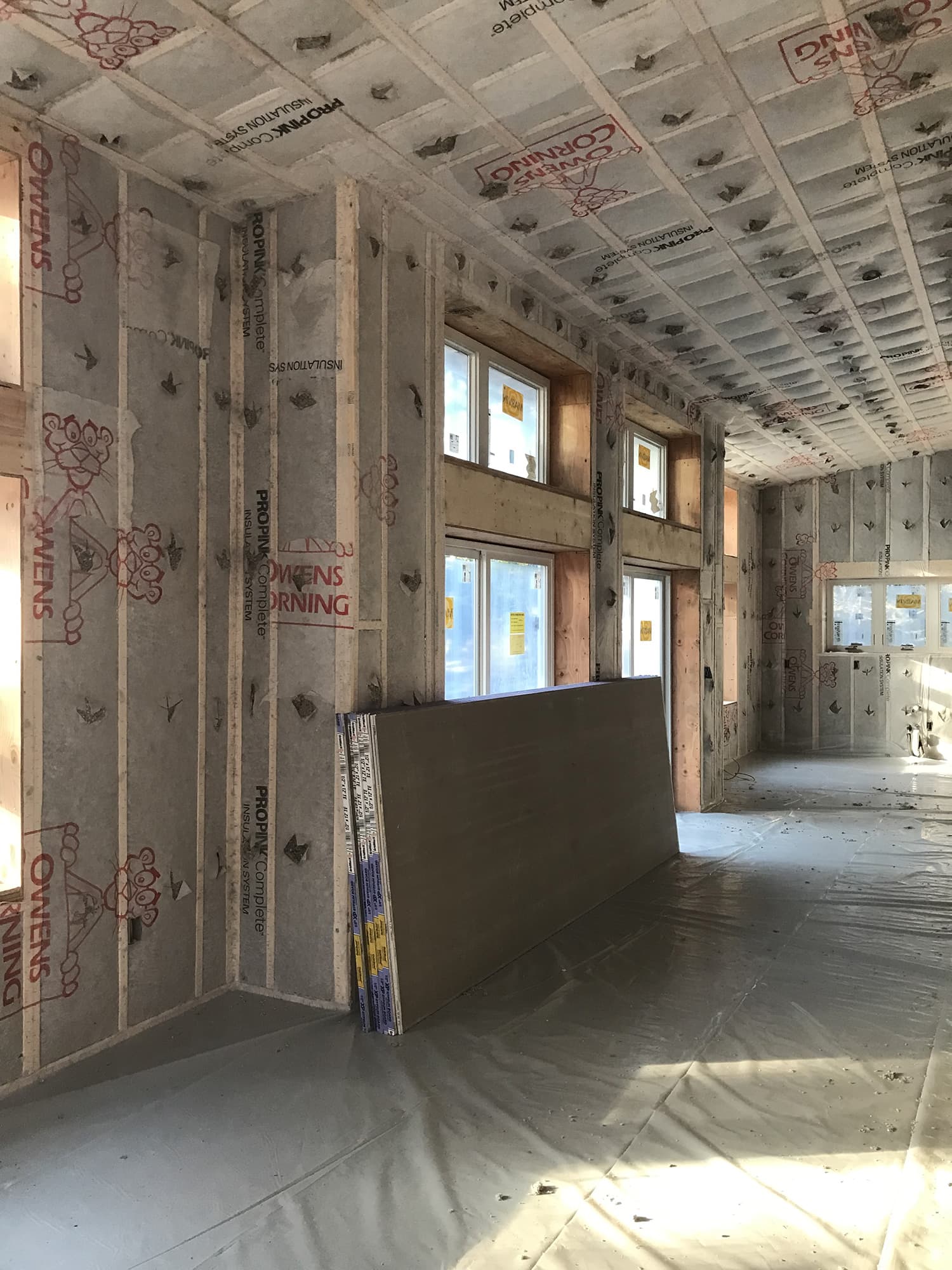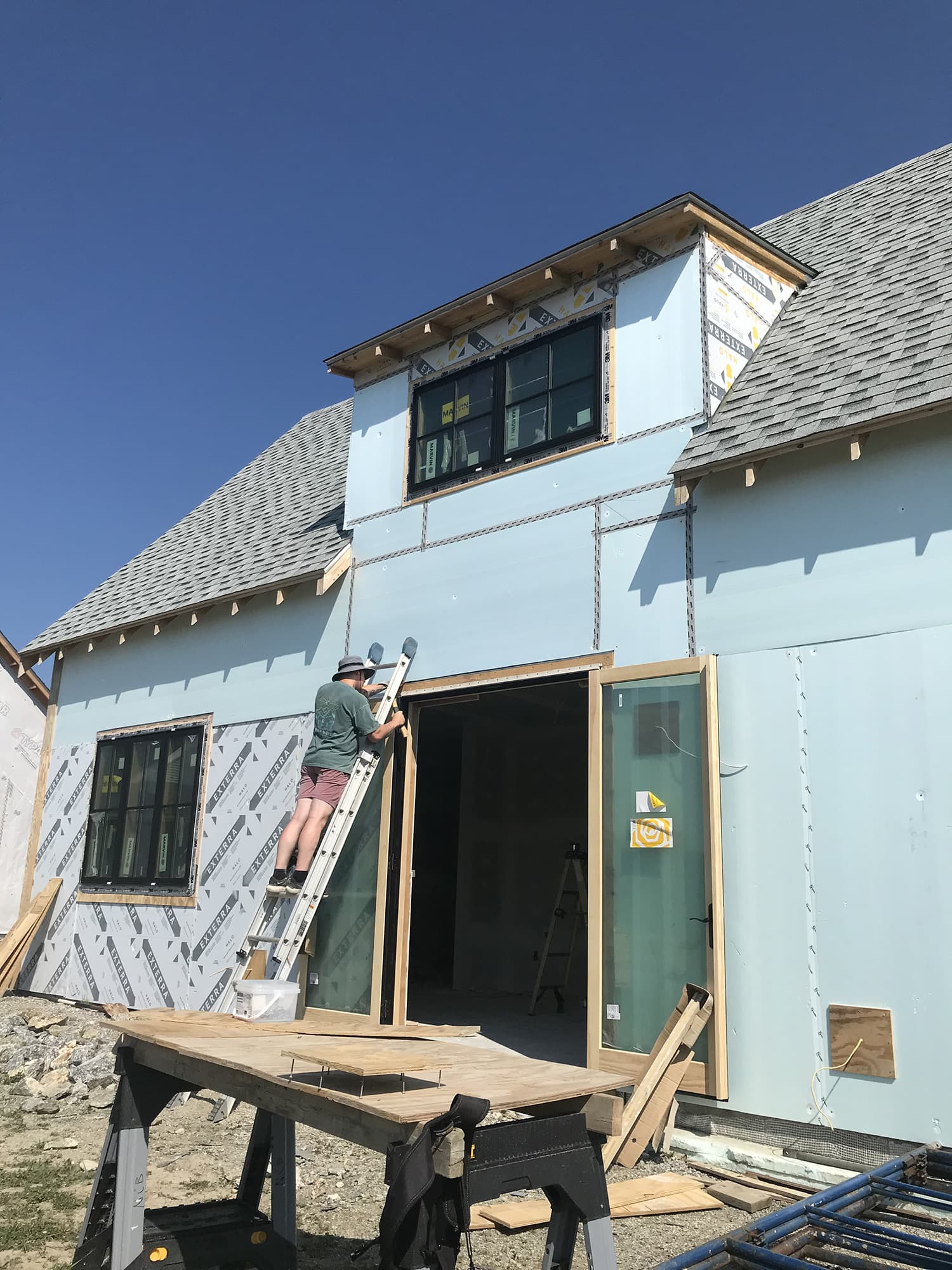Off-Grid Blog
Insulated Wall Options for High Performance New Construction
Welcome back to the Black Rock Builders blog! We are happy to be here sharing some information about the different types of insulated wall options we offer our customers, in order to achieve a super-insulated, high performance, Net Zero home.
Double stud wall with dense packed cellulose insulation – we offer this wall construction as the absolute best way to achieve Net Zero, meeting strict Passive house standards and a R-45 wall which far exceeds any standard construction code in the US for energy efficiency. This wall framing creates a cavity (also known as a thermal break) between the studs that is first air sealed, by taping all seams, before filling the cavity with a green insulation called cellulose.
As a secondary option, which also achieves R-30 wall (not as high R factor as double wall, but still exceeds code) is a 2×6 wall framed and insulated with a product called Rockwool, and an exterior application of rigid foam creating a higher total R factor. This wall assembly slightly exceeds MUBEC standards (Maine Uniform Building and Energy Code) which is the most up-to-date standards which most Maine communities are achieving currently, or moving toward.
Super insulated walls will contribute to overall energy savings, which in turn lower the cost of utility bills. The cost to upgrade to a double wall construction is roughly 10% more than framing a standard construction wall, a cost that gets returned over time in energy savings. The secondary benefit to a double wall construction is noise mitigation. The sound absorbed in a double wall creates a very quiet, peaceful environment in the interior of the home.
Because a double wall is an airtight, sealed wall, it is crucial that the proper ventilation be installed in a Net Zero or Near Zero new construction home. Our team has years of experience with the mechanicals associated with heat as well as ventilation.
Another benefit of the double wall construction is there is no vapor barrier, so the wall can ‘dry’ to the exterior or the interior – whichever is less humid.
Our team is always happy to answer your questions! Please email or call us anytime (207) 975-9204.



« Back to the Off-Grid Blog